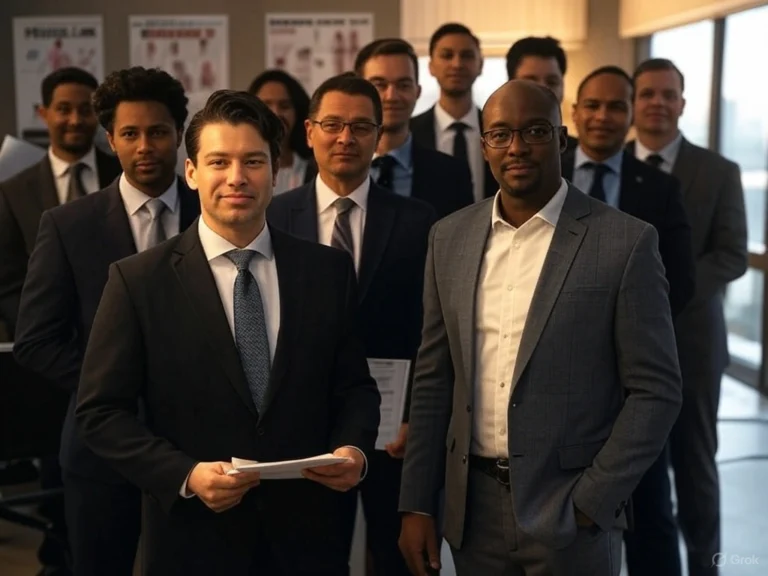
The confrontation with SEC investigation procedures represents one of the most formidable challenges a financial professional or corporate executive may encounter. When allegations of insider trading surface, the accused faces not merely administrative proceedings but potential criminal prosecution, substantial financial penalties, and irreparable reputational damage. Developing effective estrategias de defensa against such allegations requires thorough understanding of the legal framework, investigative methods, and available defenses.
The Securities and Exchange Commission has intensified its enforcement efforts in recent years, employing sophisticated data analytics and forensic techniques to identify suspicious trading patterns. This technological advancement has expanded the agency’s reach, enabling detection of even relatively modest transactions that might previously have escaped scrutiny. The Commission’s enforcement division has demonstrated willingness to pursue cases aggressively, even in circumstances where evidence appears circumstantial.
For those facing such investigations, the path forward demands careful navigation of complex legal terrain. The distinction between legitimate trading activity and prohibited conduct often turns on nuanced factual determinations and legal interpretations. This reality underscores the necessity of developing comprehensive insider trading defense strategies from the earliest indication of regulatory interest.
The Anatomy of SEC Insider Trading Investigations
The Securities and Exchange Commission employs a methodical approach when investigating potential insider trading violations. Understanding this process provides valuable insight for those who may become subject to such inquiries. The investigation typically begins with preliminary analysis of trading records surrounding significant corporate announcements or market-moving events.
During this initial phase, regulators examine trading patterns, timing, and potential connections between traders and corporate insiders. The SEC utilizes sophisticated data analytics to identify unusual trading activity that precedes public disclosures. These technological tools enable detection of suspicious patterns that might otherwise remain concealed within the vast volume of daily market transactions.
If preliminary findings suggest potential misconduct, the investigation advances to a formal phase. At this juncture, the Commission may issue subpoenas for brokerage records, electronic communications, phone records, and other potentially relevant documents. The enforcement division may also seek testimony from suspected traders, corporate insiders, and other individuals who might possess relevant information. This evidence-gathering process can extend for months or even years, creating significant uncertainty for investigation targets.
Legal Framework Governing Insider Trading
The prohibition against insider trading derives primarily from Section 10(b) of the Securities Exchange Act of 1934 and SEC Rule 10b-5, which broadly proscribe fraudulent and deceptive practices in connection with securities transactions. Rather than providing explicit statutory definition, the contours of prohibited conduct have developed through judicial interpretation and administrative rulemaking.
Under established legal principles, insider trading liability typically requires proof that the trader possessed material, non-public information and breached a fiduciary duty or other relationship of trust by trading on that information. The concept of materiality encompasses information that a reasonable investor would consider important in making investment decisions. Non-public information refers to data not yet disseminated to the broader market through appropriate channels.
The legal framework recognizes multiple theories of liability, including the “classical” theory (involving corporate insiders trading in their company’s securities), the “misappropriation” theory (involving outsiders who wrongfully obtain and trade on confidential information), and “tipper-tippee” liability (involving those who share or receive material non-public information). Each theory presents distinct elements and potential defenses, highlighting the complexity of this area of securities law.
Recognizing the Warning Signs of SEC Interest
Awareness of potential SEC scrutiny often begins with subtle indications rather than formal notification. Document requests from the company’s compliance department regarding specific trading activity may signal the commencement of an internal investigation prompted by regulatory inquiry. Similarly, unexpected questioning about trading decisions or communications with particular individuals should raise immediate concerns about possible regulatory interest.
More direct evidence of SEC investigation includes receipt of a formal or informal request for information, often styled as a “voluntary request” despite its effectively mandatory nature. These communications typically seek trading records, communications, and other documents related to specific securities transactions. While not carrying the legal force of a subpoena, such requests clearly indicate active regulatory interest and warrant immediate attention.
The most unambiguous indication of SEC investigation comes in the form of a subpoena for documents or testimony. Receipt of such formal demand removes any doubt about the seriousness of the situation and the need for immediate legal representation. The subpoena typically specifies categories of documents to be produced and may require sworn testimony before SEC staff. This formal process signals that the investigation has advanced beyond preliminary inquiry to focused examination of potential violations.
Critical First Steps When Facing SEC Scrutiny
The initial response to indications of SEC investigation can significantly influence the ultimate outcome. The paramount first step involves engaging experienced securities defense counsel with specific expertise in insider trading matters. This representation should commence at the earliest indication of regulatory interest, ideally before any substantive response to information requests or investigative inquiries.
Preservation of potentially relevant documents constitutes another essential early measure. Upon learning of possible investigation, immediate steps should be taken to suspend any routine document destruction policies and preserve all potentially relevant materials, including emails, text messages, trading records, research notes, and calendar entries. Failure to maintain such evidence can lead to allegations of obstruction or spoliation, potentially compounding legal exposure.
Concurrent with document preservation, a preliminary internal investigation should commence to assess potential exposure and develop appropriate response strategies. This process should include review of trading records, examination of relevant communications, and consideration of legitimate bases for the transactions under scrutiny. This assessment provides crucial foundation for developing effective defense approaches tailored to the specific circumstances.
Effective Defense Strategies Against Insider Trading Allegations
Several substantive defenses may apply to insider trading allegations, depending on the specific factual circumstances and applicable legal theories. Among the most powerful defenses is demonstration that the information at issue was not material or had already entered the public domain before the relevant trading activity. If the allegedly inside information would not have significantly influenced a reasonable investor’s decision-making or was already accessible through public sources, the fundamental elements of the violation cannot be established.
Another potent defense involves establishing that trading decisions stemmed from independent analysis rather than non-public information. Documentation of research, analysis, and investment strategies developed before receiving any potentially problematic information can effectively rebut allegations of improper trading motivation. This defense proves particularly compelling when the trading activity aligns with established investment patterns or previously documented strategies.
For corporate insiders and others subject to trading restrictions, pre-established trading plans under SEC Rule 10b5-1 provide significant protection. These plans, when properly established during periods when the insider possesses no material non-public information, permit predetermined trading activity regardless of subsequently acquired information. Properly documented and implemented 10b5-1 plans constitute one of the strongest affirmative defenses against insider trading allegations.
The Role of Pre-Planned Trading Patterns
The implementation of formalized trading plans under SEC Rule 10b5-1 represents one of the most effective medidas preventivas against insider trading allegations. These plans establish predetermined schedules or criteria for securities transactions, removing discretionary decision-making once the plan takes effect. When properly established and maintained, such arrangements provide powerful evidence that trading activity occurred without reliance on material non-public information.
To maximize protection, 10b5-1 plans must be established during periods when the insider possesses no material non-public information—typically during open trading windows following quarterly earnings announcements. The plan should specify either fixed trading dates or objective criteria that will trigger transactions, removing subsequent discretion from the insider. Modifications to established plans create significant vulnerability, as they may suggest attempt to capitalize on subsequently acquired information.
Recent SEC rule changes effective in 2025 have imposed additional requirements for 10b5-1 plans, including mandatory cooling-off periods between plan establishment and initial transactions, certification requirements regarding absence of material non-public information, and enhanced disclosure obligations. These changes reflect regulatory concern about potential abuse of such plans and underscore the importance of strict adherence to technical requirements to maintain their protective value.
Challenging the Materiality of Information
The concept of materiality forms a cornerstone element in insider trading prosecutions. Information qualifies as material only if a reasonable investor would consider it important in making investment decisions. This standard provides fertile ground for defense arguments that the allegedly non-public information lacked sufficient significance to meet the materiality threshold.
Effective challenges to materiality often involve demonstrating that the information represented mere speculation, preliminary discussions, or contingent possibilities rather than definitive corporate developments. Courts have consistently recognized that not all non-public information rises to the level of materiality required for insider trading liability. Information that is vague, ambiguous, or preliminary often falls short of this threshold, particularly when significant contingencies exist regarding future events.
Expert testimony can play crucial role in materiality determinations, particularly in complex cases involving technical information or sophisticated market analysis. Industry experts can provide context regarding the significance of particular information within specific market segments, potentially undermining prosecution claims about the information’s importance to reasonable investors. Similarly, economic experts can analyze market reactions to subsequent public disclosure to assess whether the information actually influenced market behavior in meaningful ways.
Public Disclosure Defense
En public disclosure defense represents another potent strategy against insider trading allegations. This approach focuses on establishing that the supposedly non-public information had actually entered the public domain through legitimate channels before the trading activity occurred. If the relevant information was accessible to ordinary investors through public sources, the fundamental premise of unfair informational advantage collapses.
Effective implementation of this defense requires comprehensive examination of public information sources that might have contained the relevant information, including news reports, industry publications, social media platforms, investor forums, and regulatory filings. Even partial disclosure of the information through these channels may suffice if the publicly available details would have enabled diligent investors to discern the supposedly privileged information through reasonable inference or analysis.
The mosaic theory provides related defense, particularly for institutional investors and market professionals. This approach acknowledges that sophisticated market participants legitimately compile numerous pieces of non-material information to form material conclusions not explicitly available from any single source. Courts have recognized that trading based on such mosaic analysis does not constitute insider trading, even when the resulting conclusions prove accurate and profitable.
Reliance on Counsel Defense
En reliance on counsel defense can provide significant protection against insider trading allegations, particularly in complex situations where the legality of proposed trading activity appears uncertain. This defense applies when the individual sought legal advice regarding the permissibility of specific transactions, provided full disclosure of relevant facts to counsel, and reasonably relied on the resulting legal guidance.
To maximize effectiveness, consultation with counsel should occur before trading activity and should involve comprehensive disclosure of all potentially relevant circumstances, including the source and nature of any information that might raise concerns. The advice should specifically address the permissibility of the proposed transactions rather than providing general guidance about insider trading principles. Documentation of the consultation and resulting advice significantly strengthens this defense.
While reliance on counsel does not provide absolute immunity from insider trading liability, it can negate the element of willfulness required for criminal prosecution and may mitigate civil penalties. Courts recognize that individuals who make good-faith efforts to comply with complex securities regulations by seeking and following professional legal advice demonstrate absence of intentional wrongdoing, even if the underlying advice ultimately proves incorrect.
Navigating SEC Testimony and Interviews
Testimony before SEC staff represents one of the most critical and potentially hazardous aspects of insider trading investigations. These formal proceedings, conducted under oath and transcribed by court reporter, provide enforcement attorneys opportunity to develop evidence against the witness and others. Thorough preparation with experienced counsel before such testimony proves essential to avoid creating problematic record.
The preparation process should include comprehensive review of relevant documents, trading records, and prior statements to refresh recollection and identify potential areas of questioning. Counsel should conduct mock examination covering likely topics and potential problematic areas. This preparation helps develop clear, accurate responses while avoiding speculation, unnecessary elaboration, or inadvertent misstatements that could create appearance of inconsistency or evasion.
During testimony, witnesses should adhere to fundamental principles that apply in any adversarial proceeding: listen carefully to each question before responding; answer truthfully but concisely; avoid speculation about matters beyond personal knowledge; clarify ambiguous questions before attempting response; and maintain professional demeanor despite potentially aggressive questioning techniques. These approaches minimize risk while fulfilling obligation to provide truthful testimony.
The Importance of Proper Documentation
Contemporaneous documentation of trading rationales and investment research can provide powerful evidence against insider trading allegations. Records demonstrating independent analysis, pre-existing investment strategies, or legitimate non-informational reasons for trading decisions can effectively rebut claims that transactions stemmed from improper access to material non-public information.
Financial professionals should maintain systematic documentation of investment theses, research methodologies, and decision-making processes as standard practice. These records should include sources consulted, analytical approaches employed, and specific factors that influenced trading decisions. When trading activity later faces regulatory scrutiny, such documentation provides contemporaneous evidence of legitimate decision-making unrelated to any allegedly improper information.
For corporate executives and others with regular access to material non-public information, documentation should extend beyond investment analysis to include compliance with internal trading policies and procedures. Records demonstrating consultation with compliance personnel, adherence to trading windows, and proper pre-clearance procedures provide additional evidence of commitment to regulatory compliance and absence of improper intent.
Parallel Criminal Proceedings: Special Considerations
The possibility of parallel criminal investigation by Department of Justice presents additional complexity in responding to SEC insider trading inquiries. While the Commission’s enforcement proceedings remain civil in nature, the agency routinely coordinates with federal prosecutors, potentially sharing information gathered during its investigation. This cooperation creates risk that statements or document productions in the civil context may have criminal implications.
This reality necessitates careful strategic consideration regarding cooperation with SEC investigations when criminal exposure appears possible. While non-cooperation with SEC inquiries carries significant risks, including potential adverse inferences and heightened penalties, statements made during SEC proceedings may later become evidence in criminal prosecution. This tension requires nuanced approach balancing cooperation benefits against self-incrimination concerns.
The involvement of criminal counsel alongside securities defense attorneys becomes particularly important when parallel proceedings appear likely. Criminal defense expertise provides essential perspective on potential criminal exposure and appropriate protective measures, including consideration of whether to assert Fifth Amendment rights during SEC testimony. While such assertion carries significant consequences in the civil context, it may prove necessary to protect against criminal jeopardy.
Settlement Considerations and Strategies
The overwhelming majority of SEC insider trading cases resolve through settlement rather than litigation. Understanding the settlement process and strategic considerations proves essential for achieving optimal resolution. Settlement discussions typically commence after the enforcement division has conducted substantial investigation but before formal charges, providing opportunity to resolve the matter without public enforcement action.
Effective settlement negotiation requires realistic assessment of litigation risks balanced against potential settlement terms. Key negotiation points typically include the specific violations to be alleged, the amount of monetary penalties, and whether to accept industry bars or other practice limitations. The characterization of the alleged misconduct in settlement documents deserves particular attention, as these descriptions may have significant collateral consequences for professional licensing, employment prospects, and reputation.
The timing of settlement overtures involves important strategic considerations. Early settlement discussions may prevent full development of the evidentiary record and demonstrate cooperation, potentially resulting in more favorable terms. Conversely, premature settlement approaches before developing strong defensive positions may signal weakness and result in less advantageous resolution. This timing decision requires careful evaluation of case-specific factors and strategic objectives.
Responding to Wells Notices
The receipt of Wells notice—formal notification that SEC staff intends to recommend enforcement action—represents pivotal moment in insider trading investigations. This notification provides opportunity to submit written statement explaining why enforcement action remains unwarranted before the Commission makes final determination. The Wells submission represents critical advocacy opportunity that can potentially prevent formal charges or influence their scope and severity.
Effective Wells submissions typically combine factual, legal, and policy arguments against proposed enforcement action. The factual component addresses evidentiary weaknesses, alternative explanations for trading activity, and mitigating circumstances. Legal arguments focus on failure to establish required elements of the alleged violations or applicability of recognized defenses. Policy considerations address whether the specific case represents appropriate use of limited enforcement resources and advances regulatory objectives.
The decision whether to submit Wells response involves important strategic considerations. While persuasive submission may prevent enforcement action, the document may also provide enforcement staff with preview of defense arguments and opportunity to strengthen their case before filing charges. This potential disadvantage must be weighed against the significant benefit of addressing Commission members directly before they determine whether to authorize enforcement proceedings.
The Impact of Recent SEC Enforcement Trends
Recent SEC enforcement actions reflect several significant trends that inform effective defense strategies. The Commission has demonstrated increased willingness to pursue cases based primarily on circumstantial evidence, particularly suspicious trading timing in relation to market-moving announcements. This approach places premium on developing alternative explanations for trading decisions supported by contemporaneous documentation.
The enforcement division has also expanded application of insider trading theories to non-traditional contexts, including trading based on information about government actions, clinical trial results, and private company developments. This expansion underscores importance of broad understanding regarding what constitutes material non-public information beyond traditional corporate announcements like earnings results or merger transactions.
Another notable trend involves aggressive pursuit of “shadow trading”—transactions in securities of companies economically linked to the company about which the trader possessed inside information, such as competitors, suppliers, or customers. This enforcement approach highlights need for caution not only regarding direct trading in securities of companies about which one possesses non-public information but also trading in economically related entities.
Artificial Intelligence and SEC Enforcement in 2025
The Securities and Exchange Commission has significantly enhanced its technological capabilities for detecting potential insider trading violations through artificial intelligence and machine learning algorithms. These advanced systems analyze vast trading data to identify suspicious patterns, relationships between traders, and correlations between trading activity and subsequent market-moving events with unprecedented precision.
For 2025, the Commission has prioritized AI-enhanced enforcement initiatives, deploying increasingly sophisticated analytical tools to detect even subtle trading anomalies. These systems can identify connections between traders and potential information sources that might not be immediately apparent through traditional investigative methods. The technology enables identification of suspicious trading clusters across seemingly unrelated accounts that might suggest coordinated activity based on shared information.
This technological advancement necessitates corresponding evolution in defense strategies. Effective defense now requires not merely addressing obvious connections or suspicious timing but anticipating how algorithmic analysis might interpret trading patterns or relationships. Documentation of legitimate trading rationales becomes increasingly important as counterweight to algorithmic suspicion based on circumstantial patterns or correlations.
Cybersecurity Considerations in Insider Trading Defense
The intersection of cybersecurity and insider trading presents emerging challenges for both regulators and defense counsel. The SEC has demonstrated increased focus on cybersecurity disclosures and potential trading based on information obtained through data breaches or system vulnerabilities. This enforcement priority creates new categories of potential insider trading violations related to cyber incidents.
For corporate executives, this trend highlights importance of proper handling of cybersecurity-related information. Knowledge of significant data breaches, vulnerabilities, or cyber incidents may constitute material non-public information restricting trading activity until appropriate public disclosure occurs. Failure to recognize the material nature of such information creates significant insider trading exposure.
From defense perspective, cybersecurity considerations create both challenges and opportunities. While expanding potential sources of material non-public information, cybersecurity issues also raise questions about information security and authorized access that may provide additional defense avenues. Unauthorized access to information through system vulnerabilities may undermine claims of fiduciary breach or misappropriation that typically underpin insider trading liability.
Protecting Reputation During SEC Investigations
Beyond legal consequences, insider trading allegations pose substantial reputational risks that require careful management. Even before formal charges, rumors of investigation can damage professional standing and create significant personal stress. Developing comprehensive strategy for protecting reputation while addressing legal concerns represents essential component of effective response.
Confidentiality should receive paramount priority during investigation phases. Information about the inquiry should remain strictly limited to essential personnel and advisors, with clear understanding regarding the sensitive nature of the matter. Premature disclosure risks unnecessary reputational damage, particularly if the investigation ultimately concludes without enforcement action, as many do.
If investigation becomes public through SEC action or media disclosure, strategic communications planning becomes necessary. This approach should include development of concise, accurate statements that acknowledge the investigation without admitting misconduct, express cooperation with appropriate authorities, and affirm commitment to ethical conduct and regulatory compliance. Professional guidance from experienced crisis communications advisors can prove invaluable in navigating these challenging circumstances.
Insurance Coverage for SEC Investigations
Directors and officers liability insurance and similar professional coverage can provide crucial financial protection during insider trading investigations. These policies typically cover defense costs, which can reach millions of dollars in complex securities matters. Understanding available coverage and properly triggering policy protections represent important early steps when facing potential investigation.
Prompt notification to insurers upon learning of potential investigation proves essential for preserving coverage rights. Many policies impose strict notice requirements and may deny coverage for delayed reporting. The notification should provide sufficient information to trigger coverage while avoiding unnecessary admissions or characterizations that might later prove problematic in defending against the allegations.
Coverage disputes frequently arise regarding policy exclusions, particularly those related to fraudulent or criminal conduct. While such exclusions typically require final adjudication before taking effect, they may create complications in coverage determinations. Early involvement of experienced insurance coverage counsel alongside securities defense attorneys helps navigate these complexities and maximize available protection.
Long-term Compliance Strategies for Prevention
Proactive compliance measures represent the most effective protection against insider trading allegations. Comprehensive insider trading policies should clearly define material non-public information, establish trading restrictions during sensitive periods, implement pre-clearance procedures for transactions by covered persons, and provide clear guidance regarding permissible and prohibited activities.
Regular training programs should supplement written policies, ensuring that employees understand both technical requirements and underlying principles. These educational initiatives should include practical examples, recent enforcement actions, and specific guidance relevant to particular business functions. The training should emphasize both legal obligations and ethical considerations, fostering culture of compliance beyond mere technical adherence.
For 2025, companies must implement the SEC’s new requirements regarding disclosure of insider trading policies and procedures. This regulation requires public companies to disclose whether they have adopted insider trading policies and to include those policies as exhibits to annual reports. This disclosure requirement creates additional incentive for developing and maintaining robust compliance programs that withstand regulatory scrutiny.
Conclusion: The Strategic Imperative
Effective response to insider trading allegations requires comprehensive strategy addressing legal, reputational, and practical dimensions of the challenge. From initial indications of regulatory interest through potential enforcement proceedings, each phase presents distinct considerations requiring careful navigation. The consequences of missteps—including substantial financial penalties, potential criminal prosecution, and lasting reputational damage—underscore the importance of sophisticated, proactive approach.
The evolving nature of insider trading enforcement, including expanded theories of liability and enhanced technological detection capabilities, creates dynamic landscape requiring continuous adaptation of defense strategies. What constituted effective defense in previous years may prove insufficient against current enforcement approaches. This reality demands engagement of experienced counsel with current understanding of enforcement priorities and successful defense methodologies.
For those who have yet to face such challenges, preventative measures represent the wisest course of action. Developing robust compliance programs, implementing clear trading policies, and maintaining comprehensive documentation of investment decisions create strong foundations against potential future scrutiny. As SEC enforcement continues to evolve with increasingly sophisticated detection methods, the value of proactive compliance grows correspondingly.
The strategic implementation of 10b5-1 trading plans provides particularly effective protection for those with regular access to material non-public information. These plans, when properly established and maintained, create presumptive evidence that trading decisions occurred without improper informational advantage. The recent regulatory changes effective in 2025 have strengthened requirements for these plans, but their fundamental protective value remains intact when implemented with proper attention to technical requirements.
Ultimately, the most effective defense against insider trading allegations begins long before any investigation commences. Through combination of clear policies, regular training, documented compliance procedures, and careful trading practices, financial professionals and corporate executives can substantially reduce their vulnerability to enforcement actions while maintaining ability to participate in securities markets. This preventative approach not only minimizes legal risk but supports the fundamental market integrity that securities regulations aim to protect.
Citations:
- Federal Insider Trading Defenses
- SEC Fight Against Insider Trading
- Defense Strategies for Insider Trading
- What is Insider Trading
- 2025 Reporting Season Hot Topics
- Insider Trading Charges Overview
- Insider Trading Defense Strategies
- Beating an SEC Insider Trading Investigation
- Understanding Insider Trading
- Insider Trading Enforcement Penalties
- Fighting Insider Trading Charges
- Defenses Against Insider Trading
- SEC and DOJ Insider Trading Tactics
- Shadow Insider Trading Case
- Defending Against Insider Trading Allegations
- Insider Trading and SEC Investigations
- How to Win Insider Trading Case
- US Defenses Against Insider Trading
- Defending an SEC Investigation
- FINRA Insider Trading Detection Update
- Primer on Insider Trading Laws
- Key Strategies for Insider Trading Defense
- Avoiding Insider Trading While Remote
- Should Insider Trading Be Legal
- White Collar Defense Insider Trading
- 2025 Reporting Season Takeaways
- Insider Trading Wikipedia
- SEC Filing on Insider Trading
- 2025 Proxy Reporting Key Issues
- SEC on Insider Trading
- Insider Trading by Friends and Family
- Insider Trading Disclosure Update 2025
- MillerKnoll Insider Trading Policy
- Understanding SEC Investigations
- SEC Actions for 2025
- FINRA SIE Insider Trading Fundamentals
- Insider Trading Enforcement Penalties
- SEC Filing on Insider Trading Policy
- Insider Trading US Code
- What is Insider Trading Explained
- Legal Risk and Insider Trading
- Insider Trading Image by Investopedia
- Defending Against Insider Trading Charges
- Insider Trading Defense Lawyer
- SEC Investigations Guide 2022
- SEC Enforcement Trends for 2025
- Insider Trading Legal Definition
- How SEC Tracks Insider Trading
- Ninth Circuit on Shadow Insider Trading
- Insider Trading as White Collar Crime
- Penalties for Insider Trading








